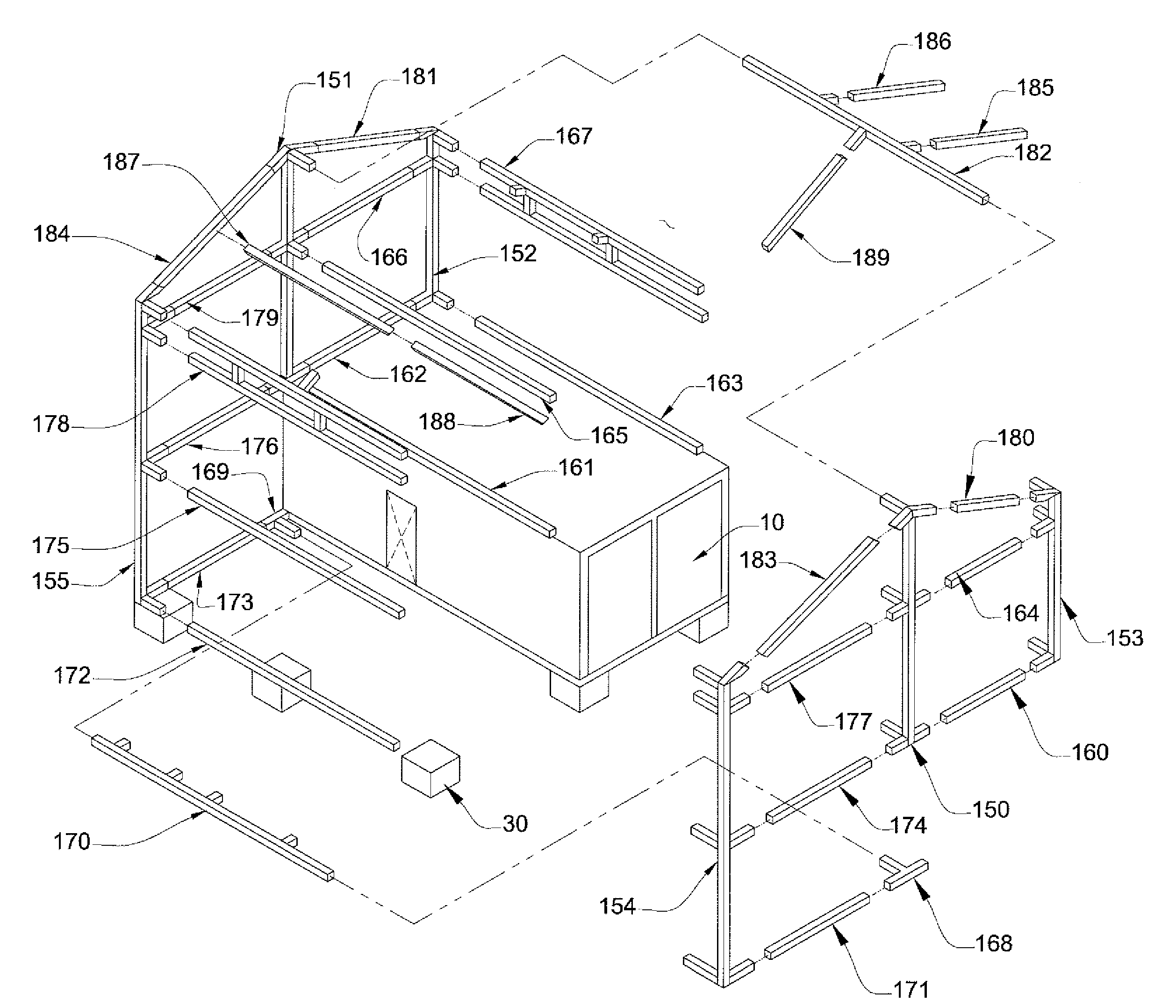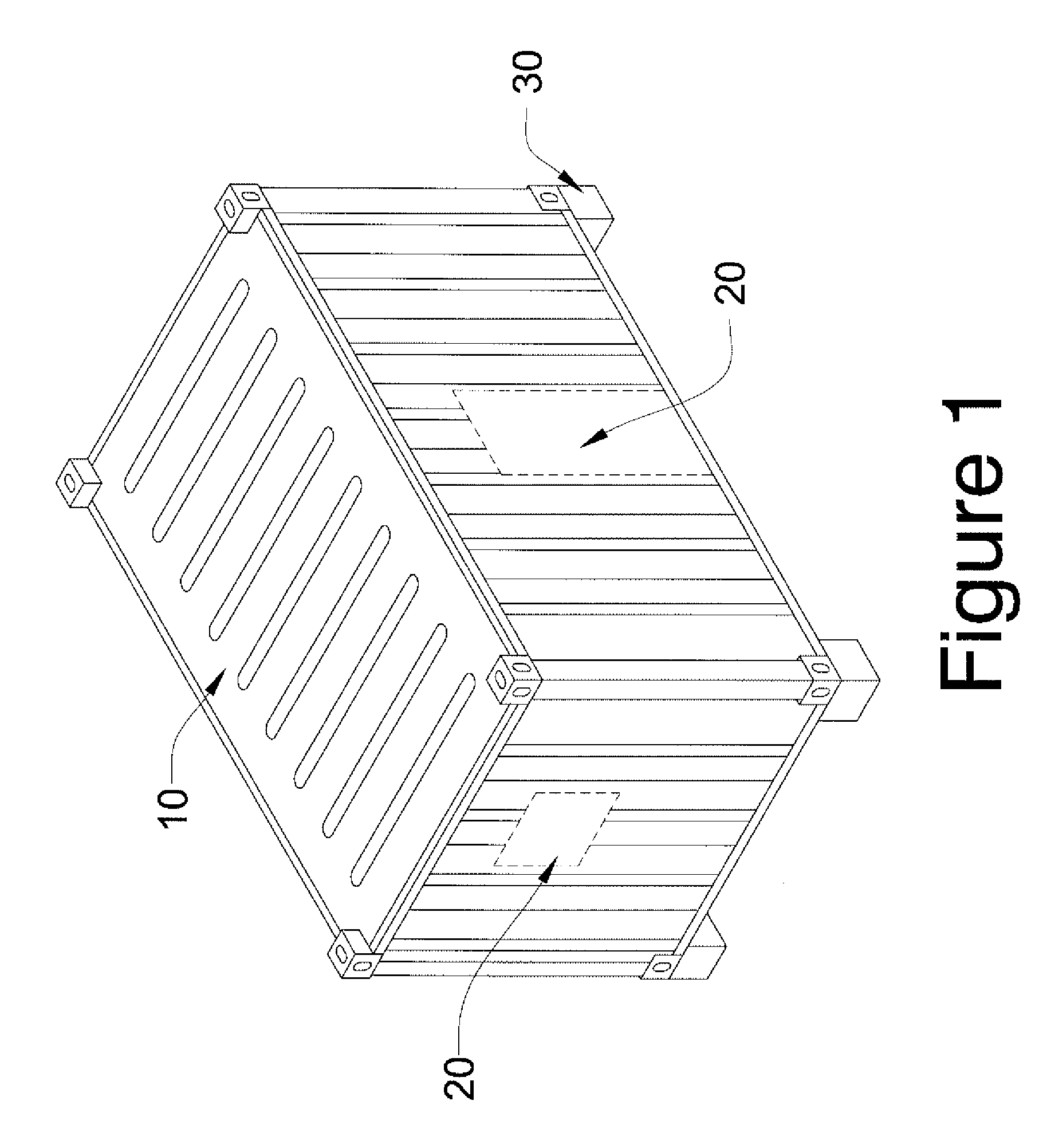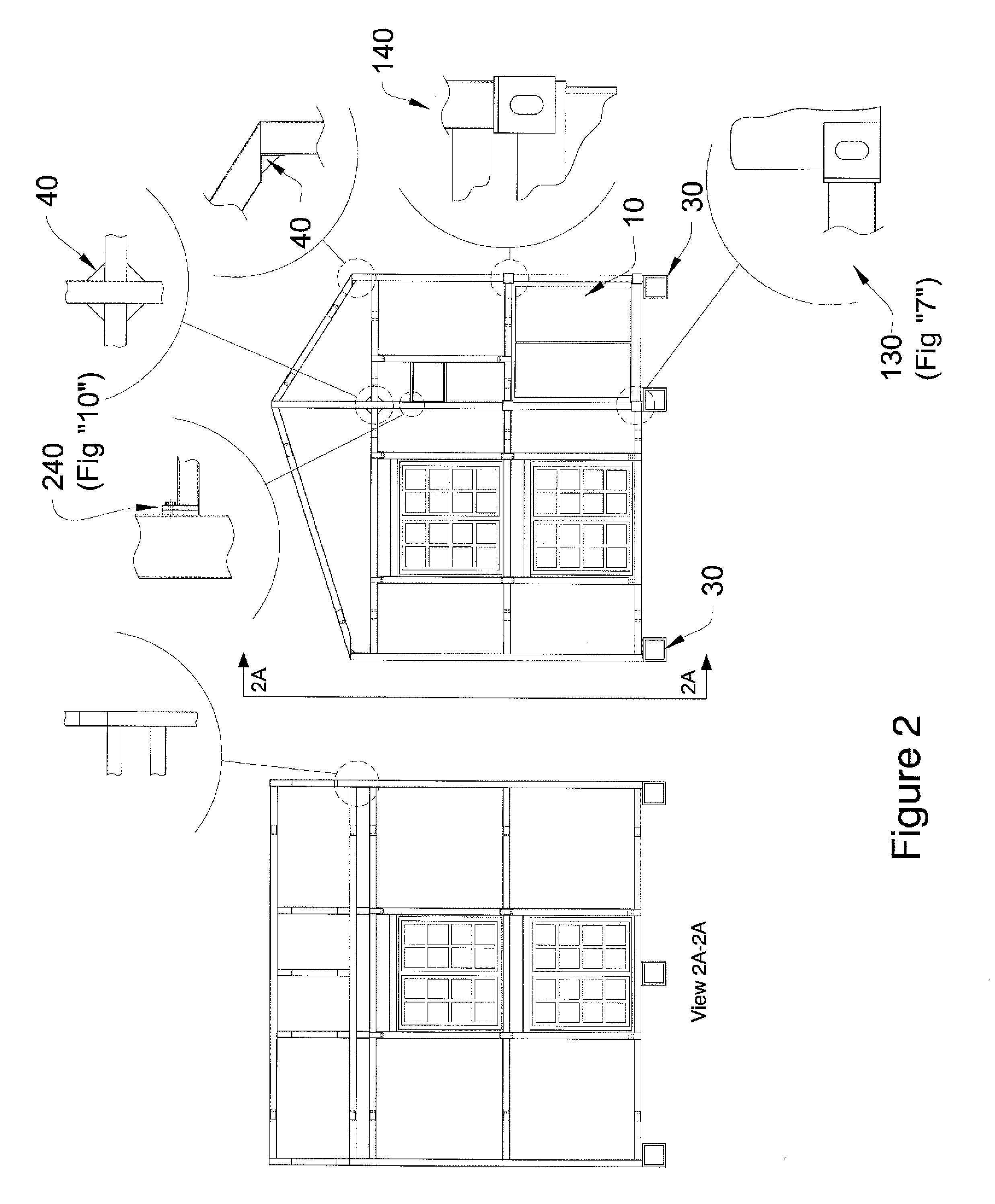Transportable, modular, self contained shipping container building
a self-contained, shipping container technology, applied in the field of transportable modular buildings, can solve the problems of many used containers available at a relatively low cost in comparison to conventional labor-intensive materials, and cannot be cost-effectively returned to their origin, and achieve the effect of reducing the length of the unsupported beam
- Summary
- Abstract
- Description
- Claims
- Application Information
AI Technical Summary
Benefits of technology
Problems solved by technology
Method used
Image
Examples
Embodiment Construction
[0050]The following description will refer, generally, to FIGS. ‘1’ through ‘22’. The Building is described more fully herein with reference to the accompanying figures, in which preferred embodiments of the invention are shown. The Building may, however, be embodied in many different forms, some examples being shown in FIGS. ‘24’ through to ‘26’. The examples should not be construed as limiting the invention described therein; rather, these embodiments are provided so that this disclosure will be thorough and complete and will fully convey the scope and intent of the invention to those skilled in the art. The members shown in the examples are typically straight for simplicity; these can be replaced with curved members with improved strength and aesthetic qualities.
[0051]It should be kept in mind that local modifications may be incorporated to accommodate the requirements of local building regulations and environmental conditions. For example building regulations and environmental c...
PUM
 Login to View More
Login to View More Abstract
Description
Claims
Application Information
 Login to View More
Login to View More - R&D
- Intellectual Property
- Life Sciences
- Materials
- Tech Scout
- Unparalleled Data Quality
- Higher Quality Content
- 60% Fewer Hallucinations
Browse by: Latest US Patents, China's latest patents, Technical Efficacy Thesaurus, Application Domain, Technology Topic, Popular Technical Reports.
© 2025 PatSnap. All rights reserved.Legal|Privacy policy|Modern Slavery Act Transparency Statement|Sitemap|About US| Contact US: help@patsnap.com



